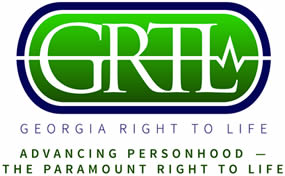 Every 10 minutes, a person’s name is added to the organ transplant waiting list.
Every 10 minutes, a person’s name is added to the organ transplant waiting list.
Every day, approximately 80 people receive a new organ.
Every day, almost 20 individuals die because they did not receive one.
At the writing of this article, there were more than 120,000 patients on the waiting list to receive a transplant.
Demand continues to exceed the supply of life-saving organs.
Because of the growing shortage of available organs, many in the transplant business are calling for loosened—and arguably immoral—rules for when it’s ethically and legally acceptable to harvest organs.
The questions are: Can organs only be taken from a dead person? What does it mean to be dead? Should it be permissible to harvest vital organs from a living person who wishes to be a donor?
It wasn’t that long ago when answers to these questions seemed relatively easy. If you’re dead you’re dead.
But the advance of technology, coupled with a growing public callousness, has raised numerous medical, legal and ethical issues.
If there is a growing shortage, then why not serve the greater good by making it easier to declare someone dead enough to donate, even though they may not be technically dead?
Families dealing with this issue are often faced with a heartrending dilemma. On the one hand, there is a deeply rooted motivation to prolong the life of a loved one in the hope of recovery.
In fact there are numerous cases of people recovering—at least partially—years after being declared brain dead.
There are even instances when patients have awakened as doctors were beginning the process of retrieving his organs. In one case, the patient could hear the doctors talking just before he woke up.
At the same time, many people have a deep-seated desire to help someone else in need. That emotion is being propelled by a growing sentiment that older, sick and possibly closer to death individuals have a moral obligation to get out of the way and help younger people who can still contribute to society.
Making the right decision is stressful, painful and emotionally draining. The following information is offered in an effort to aid those in such situations.
Today, physicians generally rely on a determination of “brain death” as the point at which vital organs can be ethically and legally removed. (See Wanted Dead or Alive Part II for definitions).
That criterion was set in 1968 by a Harvard Medical School committee and has become the “Dead Donor Rule” (DDR).
DDR is not a law; it’s an informal standard which states organ retrieval must not cause the death of the patient. It’s also consistent with a physician’s oath to “do no harm.”
One problem is that there are variations of the standard for brain death among hospitals, and even among different doctors in the same hospital.
Another controversial fact is that even following the DDR does mean the patient is actually dead. For example, hearts and lungs cannot be harvested after death occurs. They must still be functioning at the time of retrieval.
Because of that reality, many argue that in such cases the act of taking the organ is the cause of death, not removing the patient from life support.
In fact, there have been calls to openly admit that brain death is sometimes an imprecise diagnosis and as a result removing life support is actually the cause of death.
At the extreme, are those who want to legalize physician-caused death so that retrieval can occur “earlier in the dying process.”
Their position is based, in effect, on the idea that it’s selfish to refuse to take organs from those at death’s door; that they should be given to healthier people who could return to normal lives with a new organ.
In their view, organ donation would be permitted, with adequate anesthesia, while the living patient remains on life support. As such it would do away with the DDR.
They base their assertion on the fact that such practices are already being followed and that explaining the situation more honestly would increase the supply of organs if society accepted that.
As one article has proclaimed, “…the moral implications of our current practices, viewed honestly, pave the way for the seemingly radical and controversial position of abandoning the DDR rule and affirming the traditional standard of death as cessation of circulation and respiration.”
The same article proclaimed that, “The emotionally charged and value-laden language of ‘killing’ gets in the way.”
Shockingly, the same article proclaims, “Our own view is that brain dead patients and those in a persistent vegetative state, owing to the permanent loss of consciousness, have no interests that can be harmed by ending their lives, (provided that they have no prior preferences to continue living under these circumstances)…”
The article also says the same rule should apply to ventilator-dependent quadriplegics who choose to end their lives and donate their organs.
As our society becomes increasingly desensitized to death—both of pre-born children and the elderly and infirm—pressure to look at life issues with a jaundiced eye will only grow.
For those who value the sanctity of all innocent human life, regardless of age or condition, it’s imperative to be informed about these issues and make prayerful decisions.
The final article in this series will offer a few basic guidelines for those dealing with end of life decisions.
This is the third article in a series on organ donation. The other articles Wanted Dead or Alive! Part I; An Overview and Wanted Dead or Alive! Part II; Essential Medical Terminology can be viewed at grtl.org.
(Note: This article contains a summation of medical conditions and activities related to a variety of potential end-of-life issues. This information is not to be considered medical advice. Persons facing any of these situations are urged to explore all options with trusted medical professionals).
Sources: jmedethics.com; nejm.org; thehastingscenter.org; lifenews.com.
